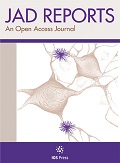Authors: Friel, Howard
Article Type:
Review Article
Abstract:
A five-year close reading of the scientific literature on late-onset Alzheimer’s disease (AD) has prompted the invention of a novel therapeutic method that biomechanistically targets the targetable disease-process targets of AD with one or another mixture of non-toxic pleiotropic natural compounds. The featured mixture herein is comprised of curcumin, resveratrol, and EGCG. The mixture’s targets include central pathological elements of AD (including amyloid, tau, synaptic dysfunction, oxidative stress, mitochondrial dysfunction, and aberrant neuroinflammation), modifiable risk factors, comorbidities, and epigenetic elements. The featured mixture and other such mixtures are suitable
…for long-term use, and may be applied to any stage of AD, including primary and secondary prevention. Such mixtures also would be amenable for use as pre-treatment, co-treatment, and post-treatment applications with certain biopharmaceutical agents. The targeting focus here is the major credible hypotheses of AD. The focus of future such articles will include other AD-related targets, modifiable risk factors and comorbidities, APOE4 , epigenetic factors, bioavailability, dose response, and implications for clinical testing. The “universal targeting” method described herein—that is, “targeting the targetable targets” of AD using certain mixtures of natural compounds—is reprogrammable and thus is applicable to other chronic neurological conditions, including Parkinson’s disease, vascular dementia, ischemic-stroke prevention and recovery, and sports-related head injuries and sequelae leading to chronic traumatic encephalopathy.
Show more
Keywords: Alzheimer’s disease, amyloid hypothesis, curcumin,
epigallocatechin gallate
(EGCG)
, mitochondrial dysfunction, neuroinflammation, oxidative stress, resveratrol,
synaptic
dysfunction
, tau
DOI: 10.3233/ADR-190127
Citation: Journal of Alzheimer's Disease Reports,
vol. 3, no. 1, pp. 219-232, 2019





